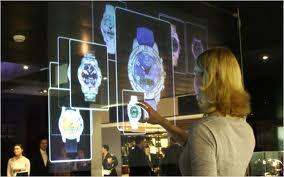We reflect on two museum visiting experiences that adopted the strategy of interpersonalization in which one visitor creates an experience for another. In the Gift app, visitors create personal mini-tours for specific others. In Never let me go, one visitor controls the experience of another by sending them remote instructions as they follow them around the museum. By reflecting on the design of these experiences and their deployment in museums we show how interpersonalization can deliver engaging social visits in which visitors make their own interpretations. We contrast the approach to previous research in customization and algorithmic personalization. We reveal how these experiences relied on intimacy between pairs of visitors but also between visitors and the museum. We propose that interpersonalization requires museums to step back to make space for interpretation, but that this then raises the challenge of how to reintroduce the museum's own perspective. Finally, we articulate strategies and challenges for applying this approach.
翻译:我们反思了两种博物馆的参观经验,即采取了一个访客为另一个访客创造经验的“人际交往”战略。在礼品应用程序中,访客为另一个特定访客创造了个人迷你图。从不让我去,一位访客通过在博物馆周围随从他们发出远程指示来控制另一个人的经验。通过反思这些经验的设计及其在博物馆中的部署,我们展示了人际交往如何提供有访客自己解释的参与性社交访问。我们对比了以前在定制和算法个人化方面的研究方法。我们揭示了这些经验如何依赖对访客之间的亲密关系,同时也依赖访客和博物馆之间的亲近关系。我们提议,人际交往要求博物馆退后为翻译提供空间,但这又提出了如何重新引入博物馆自己观点的挑战。最后,我们阐述了应用这一方法的战略和挑战。



